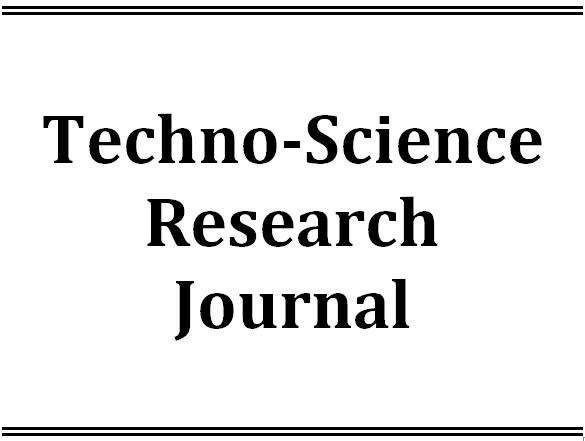Latest Issue
Effect of Different Irrigation Methods on Water Use Efficiency in Rice Soil Column Test
Published: April 30,2025Optimization of Extraction Condition for Oleoresin from Red Pepper Residues
Published: April 30,2025Bus Arrival Time Prediction Using Machine Learning Approaches
Published: April 30,2025A Deep Learning Approach for Identifying Individuals Based on Their Handwriting
Published: April 30,2025Khmer Question-Answering Model by Fine-tuning Pre-trained Model
Published: April 30,2025CNN-based Reinforcement Learning with Policy Gradient for Khmer Chess
Published: April 30,2025Water Quality Monitoring Toward Management of Sesan River of SteungTreng Province of Cambodia after the Bloom of Toxic Cyanobacteria
-
1. Department of Chemical Engineering and Food Technology, Institute of Technology of Cambodia, Russian Ferderation Blvd.,
P.O. Box 86, Phnom Penh, Cambodia.
Academic Editor:
Received: June 01,2014 / Revised: / Accepted: June 08,2014 / Available online: June 27,2014
The recent research has shown the bloom toxic of cyanobateria in Sesan River which is one of the largest tributaries of Mekong River. The bloom toxic of cyanobacteria released cyanotoxin which is the serious problem causing adverse health effects for the local people along the river since this river is the main source for daily use. Therefore, the condition growth of cyanobacteria and sources of contamination were investigated after this research which was conducted twice in rainy and dry season. 3 sampling sites along the river that were chosen to be analyzed and monitored the water quality after the occurrence of bloom of the cyanobacteria. The condition growth of cyanobacteria was conducive in term of temperature, pH, and nutrient in rainy and dry season. Data showed the concentration of Phosphate in which range from 0.05mg/l to 0.87mg/l and Nitrate range from 0.75mg/l to 1.53mg/l indicated that the river has been contaminated and it has been the best nutritional condition for its growth and bloom. Additionally, sources of contamination were shown as a result of untreated sewage, agriculture activities, fertilizer, soil erosion, material decay, mining activities and dam construction in the upstream.

